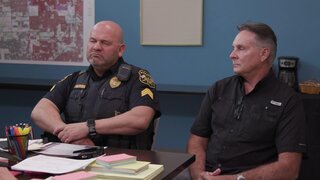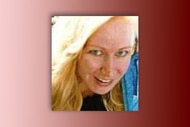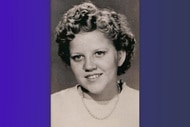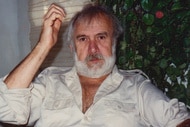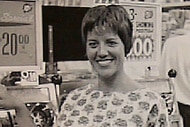Create a free profile to get unlimited access to exclusive videos, breaking news, sweepstakes, and more!
Quadruple Murder Claims 3 Generations: ‘Cold Justice’ Investigates Grisly 1997 Slayings
In 1997, a woman, her mother, and her two baby daughters were found brutally murdered in their Florida home. Who killed this family, and why?
On April 30, 1997, the bodies of Marie Altidor, 29, her daughters, Sabrina, 6 weeks, and Samantha, 2; and her mother, Theresia Laverne, 6, were discovered amid a bloodbath at the Altidor home.
“The inside of the house was so bloody that the first officers who went in to look for evidence wore biohazard suits,” UPI reported at the time of the killings.
The two children were bludgeoned to death with a hammer or hammer-like tool. The two women had similarly been beaten and shot multiple times. The killers left behind a message scrawled on a wall, reported the Sun-Sentinel. “I want my 100,000 drug money,” it read. “They stole my drugs.”
More than 24 years later, the investigation into the brutal quadruple homicide is ongoing. The victims’ loved ones, including her sisters and nieces, desperately want justice.
On an episode of “Cold Justice,” airing Saturdays at 8/7c on Oxygen, veteran prosecutor Kelly Siegler and investigator Tonya Rider were in Miramar, Florida to dig into the case with local law enforcement. Working alongside them: Miramar Police Department detectives Daniel Smith and Jonathan Zeller.
Together, the team reviews the case.
On April 30, 1997, Marie's husband, George Altidor, left for work at 7 a.m. When he failed to reach his wife after repeated calls, he asked his brother-in-law to check on the family. The murders were then discovered. There were no weapons or signs of forced entry found. The hand-written message was the lone clue. Investigators didn’t find any evidence of drugs or drug activity, which raised the possibility that the message was written to divert attention away from the true killer.
Forensic firearms expert Chris Robinson recreates the crime scene for the team, which helped them gain insight into the scene. "There was no forced entry. There was nothing taken. And George’s locked office does not appear to have been tampered with," Siegler says.
Dr. Kathryn Pinneri, a forensic pathologist, analyzes the victims’ wounds and concludes that a hammer was most likely used in the slayings. The four victims sustained a total of 70 blows, and the adults were also shot multiple times. “This just screams of someone filled with rage or adrenaline,” Siegler says.
The “Cold Justice” team then scrutinizes George Altidor’s history. George was a person of interest in the initial investigation. After the homicides, he remarried and lives in Oklahoma. They learn that during the initial investigation, his first wife said years earlier he’d threatened her at gunpoint, but he denied ever having a firearm.
George’s many calls to his wife the day of the murder appeared to be unusual. Were all those calls made to appear as concern? But nothing conclusive can be drawn from his repeated attempts to reach his wife. George’s handwriting was analyzed in 1997 and found not to match that used in the message. During the investigation, the “Cold Justice” team’s handwriting expert concludes, like the initial analysis, that George did not write the message left at the scene of the crime.
Marie’s godmother received a call from the house at 7:09 a.m. the day of the murders, according to “Cold Justice.” George arrived at work at 7:30 a.m. that morning. “There’s no way that George could have killed his whole family after that phone call at 7:09 a.m. and still made it to work on time,” says Siegler.
The team interviews a number of witnesses to get a better reading on the Altidor marriage. By some accounts there were cracks in the union. One witness claims that George was cheating on Marie, and that she knew about the affair. The assertion raises a possible murder motive.
The team also learns that the woman who received the 7:09 a.m. phone call from the Altidor house on the day of murders was unsure the call came from Marie. Could it have been made by someone else? With available information, the question can not be answered definitively.
Siegler and Zeller travel to Oklahoma to the home of George Altidor in an effort to interview him. “I’m the new person on your family's case in Miramar,” Zeller tells George through the door. “I wanted to talk to you about the case and give you some updates.”
George instructs the investigator to speak with his lawyer — “George has a right to have an attorney and asking for an attorney has no implication of guilt,” says Siegler.
In the end, the team reviews what they’d found, along with the unanswered questions about the 7:09 a.m. call.
“The only way to ever explain that call is for something brand new to break out where somebody that knows about that call comes forward and until that happens, this is where we are and it makes me sick,” says Siegler.
“We don't leave any stone unturned,” adds Rider. “This is just heartbreaking.”
To learn more about this case, watch “Cold Justice,” airing Saturdays at 8/7c on Oxygen. You’ll find more episodes here.

